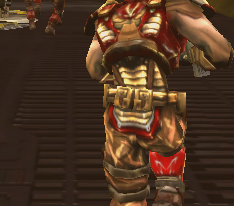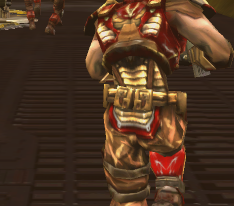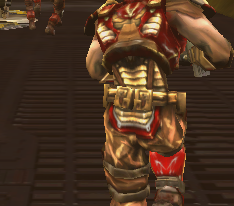Linux 3D AGP GPU Roundup: More Cutting Edge Penguin Performance
by Kristopher Kubicki on October 4, 2004 12:05 AM EST- Posted in
- Linux
FSAA and AF
Enabling and disabling Full Screen Anti Aliasing and Anisotropic Filtering for both cards was met with varying succes. 4X AA for the ATI cards was enabled by hand in the XF86Config file. We needed to include the additional options for our fglrx device after installing the driver properly:Option "FSAAEnable" "yes" Option "FSAAScale" "4" Option "FSAADisableGamma" "no" Option "FSAACustomizeMSPos" "no" Option "FSAAMSPosX0" "0.000000" Option "FSAAMSPosY0" "0.000000" Option "FSAAMSPosX1" "0.000000" Option "FSAAMSPosY1" "0.000000" Option "FSAAMSPosX2" "0.000000" Option "FSAAMSPosY2" "0.000000" Option "FSAAMSPosX3" "0.000000" Option "FSAAMSPosY3" "0.000000" Option "FSAAMSPosX4" "0.000000" Option "FSAAMSPosY4" "0.000000" Option "FSAAMSPosX5" "0.000000" Option "FSAAMSPosY5" "0.000000" Option "UseFastTLS" "0" Option "BlockSignalsOnLock" "on" Option "UseInternalAGPGART" "no" Option "ForceGenericCPU" "no" Option "EnablePrivateBackZ" "yes"
Pay considerable attention to the EnablePrivateBackZ option. Although documentation for that particular variable seems light, AntiAliasing refused to draw correctly without it. Without enabling that element on our tests beds, nothing would draw to the screen.
You may notice that we purposely have not discussed much about Anisotropic Filtering up until this point. There are currently no driver-level AF features in fglrx. This is a large problem with the Radeon cards in our lineup - but fortunately, we still have trilinear and bilinear filtering.
To enable FSAA for NVIDIA cards, we needed only to set the environmental variable $__GL_FSAA_MODE to 4 (AF is enabled similarly by setting $__GL_DEFAULT_LOG_ANISO). We do not need to restart X to enable FSAA or AF, which is a huge relief for us. However, attempting to find Anisotropic Filtering working correctly in a game setting proved difficult. Perhaps it was the way in which we configured our drivers, or perhaps some fluke in our testing methodology escaped us, but AF for NVIDIA cards did not work.
Since the AnandTech FrameGetter utility by default measures FPS once every second, we modified the source to take screenshots every tenth of a second for this portion of the test. After running the various benchmarks a few times, we had several hundred overlapping frames to choose some comparative screenshots for IQ testing. Below, you can see our capture of a soldier that shows two levels of anti-aliasing. Try as we could, there were no instances of one card rendering AA differently than the other. No driver cheating conspiracies today.
| None |  |
| 4X |  |
| Mouseover AA to No AA |
|
There is nothing really shocking in these benchmarks. AA is behaving the same as it would in Windows. It was worth checking to make sure, though. Using the same method as above, we can demonstrate some rudimentary advantages of trilinear filtering over bilinear filtering.
| Bilinear |  |
| Trilinear |  |
| Mouseover bilinear to trilinear |
|
Again, everything here is on par with Windows demonstrations of trilinear/bilinear filtering. There were no differences between the ATI and NVIDIA implementations of trilinear and bilinear filtering; we get the same images on both cards.










33 Comments
View All Comments
adt6247 - Monday, October 4, 2004 - link
Good article. The one thing that I thought was lacking is the comparison to FPS's under Windows. That would be incredibly useful.One more thing -- nVidia actually has a graphical configuration panel for Linux. I forget what it's called; I use it all the time to set AA/AF settings on my box, but my machine is at home, and I'm at work now. I'll post later with the name of the binary.
adt6247 - Monday, October 4, 2004 - link
KristopherKubicki - Monday, October 4, 2004 - link
Ziast: Fixed.Kristopher
Ziast - Monday, October 4, 2004 - link
Nice article except for this glaring mistake:"All in all, just getting the ATI drivers on something that isn't Red Hat feels like way too much work for basic OpenGL support. Keep in mind that we even run SuSE, a Red Hat derivative."
SuSe Linux was first released in 1993. Red Hat Linux was not released until 1994. Just because SuSe uses RPM doesn't mean it's a Red Hat derivative.
Papineau - Monday, October 4, 2004 - link
Two RFEs, one for the article, the other for FG.For the article: Would it be possible to graph the ratio of FPS from one card to the other one over time? That would help to know if a card is "always 1.5 times faster than the other", or "sometimes even, sometimes faster, usually slower than the other".
For FG: Why modify the executable file? Why not use LD_PRELOAD/LD_LIBRARY_PATH to load the lib you want to insert (libFG), and then have it call the system's libGL and libSDL? It seems a bit "bad practice" to modify the benchmarked executable.
Term - Monday, October 4, 2004 - link
#6I get more FPS with Linux in both Quake1(World) and Quake3 (single and dual cpu) then with Windows2000. Thow I suspect that if you have a newer card then you might not, due to the drivers.
Cygni - Monday, October 4, 2004 - link
When 64bit Windows finally ships, and the entire Athlon64 and Opteron user base switches over, including many gamers, the pressure will be on for ATI, and judging by how good their driver team has been in the 32bit Win sector these last few months, hopefully they can rise to the challenge.As far as Linux drivers for speed? I hate to break the news to alot of people, but gaming on Linux is a HUGE chore with little payoff. Ive spent HOURS with clean installs of Mandrake to play games I already have for Windows... only to, of course, see that they are slower than their windows counterpart. Linux is great for alot of stuff, and ive always got a computer somewhere running Mandrake 9.1... but it just ISNT for gaming right now, which I think the review helped illustrate nicely.
ViRGE - Monday, October 4, 2004 - link
I wouldn't be too excited about ATI's 64bit Linux plans, let alone even their 64bit Windows plans. Their only 64bit drivers are over 4 months old, and don't support any of the X-series of cards, which really limits their usefulness. ATI has said before that they may not ship another build until some time in 2005.raylpc - Monday, October 4, 2004 - link
"we received some information from ATI about some upcoming Linux announcements which they are working on"I remember ATi is working on some "plan", so the actual driver release could be way after. Well, nvidia is probably the next card I'm going to get.
Saist - Monday, October 4, 2004 - link
my first thought was:how in the world can an Geforce FX MATCH and BEAT the R300 architecture. I guess if you ever wanted empirical proof that ATi has ignored Linux, this is it.